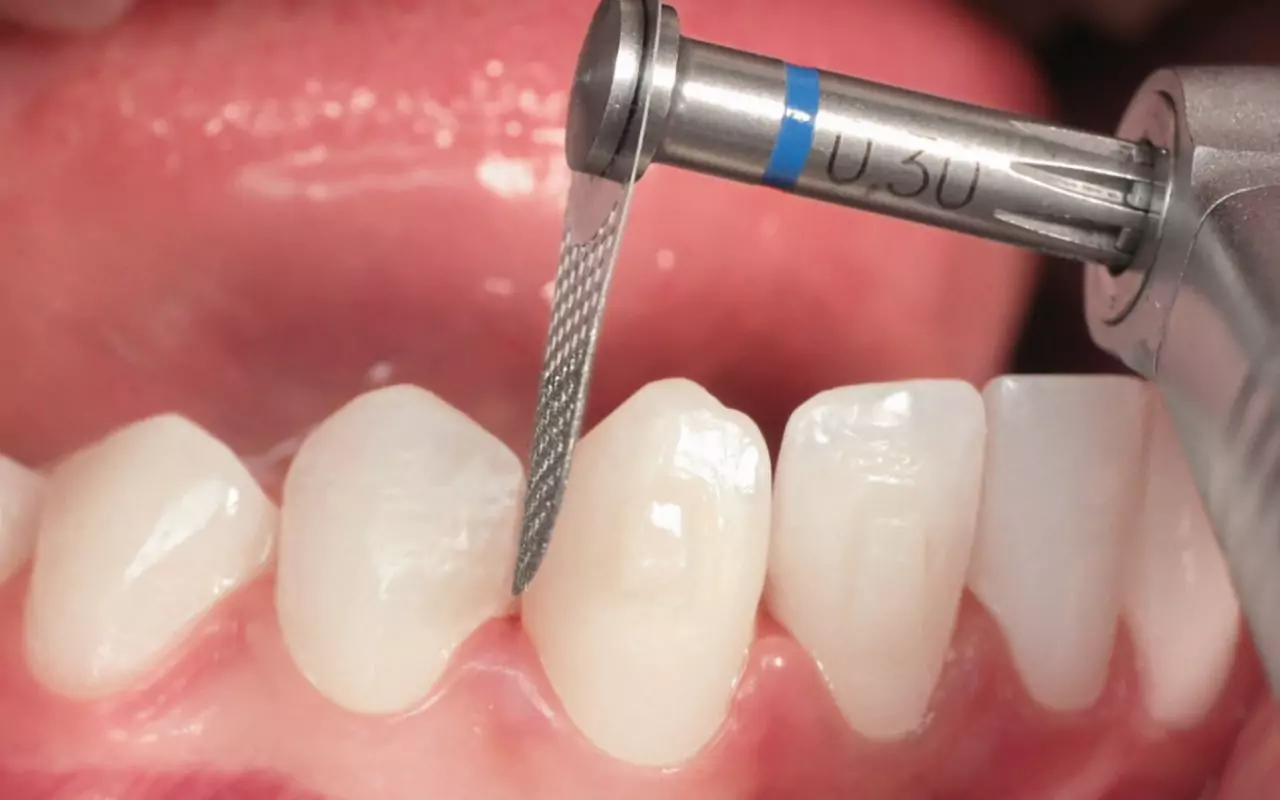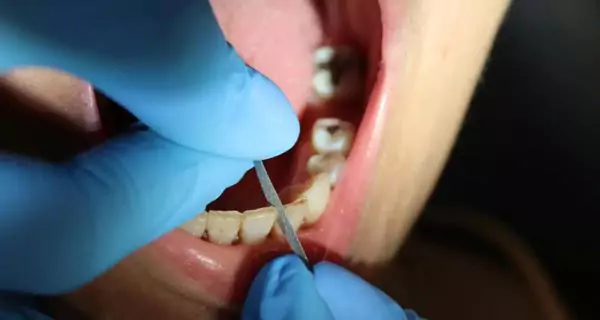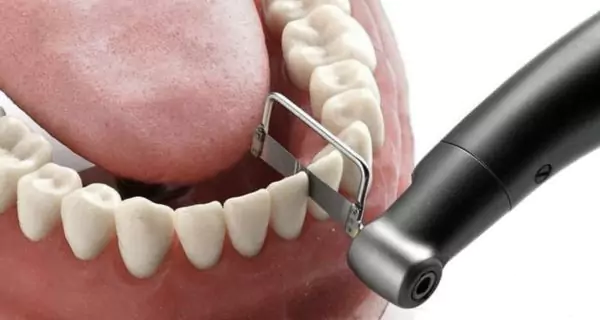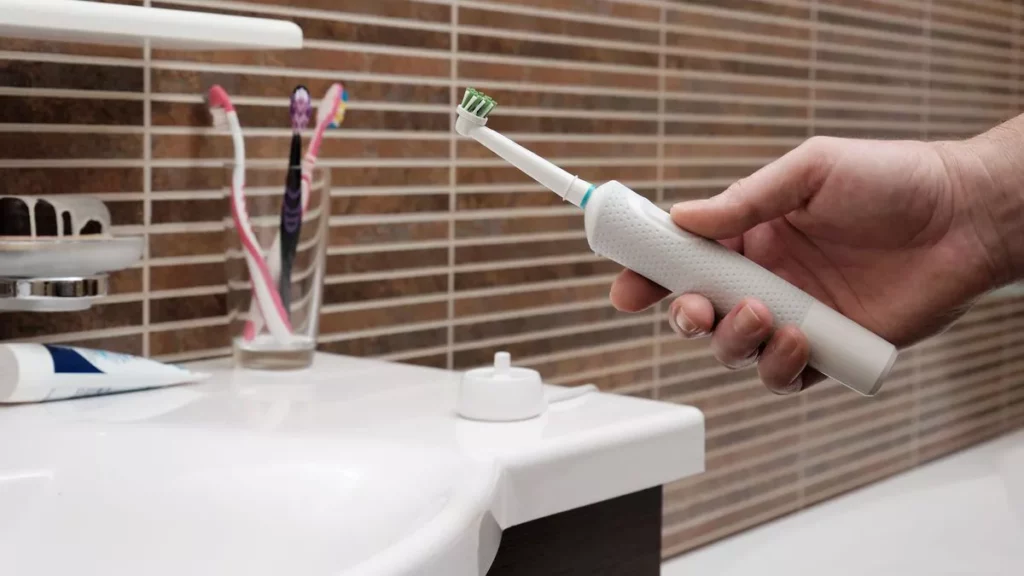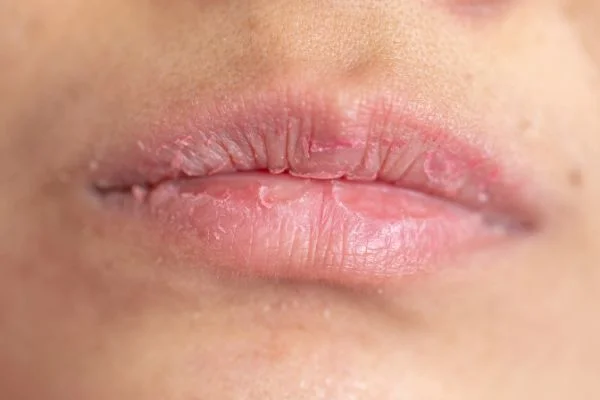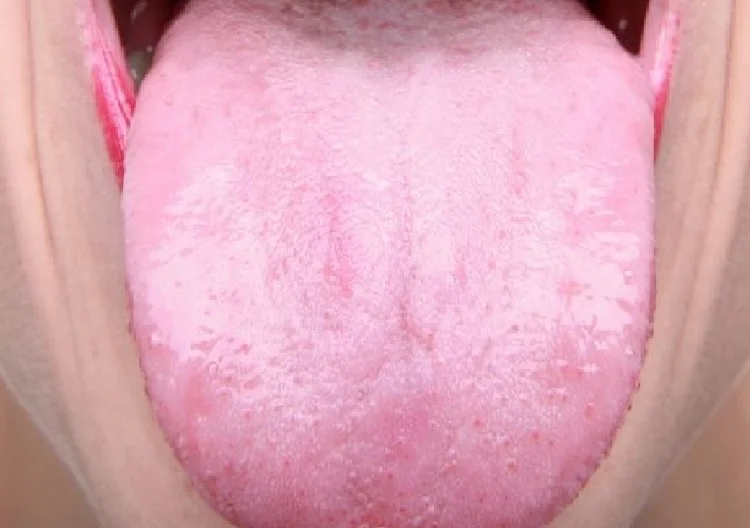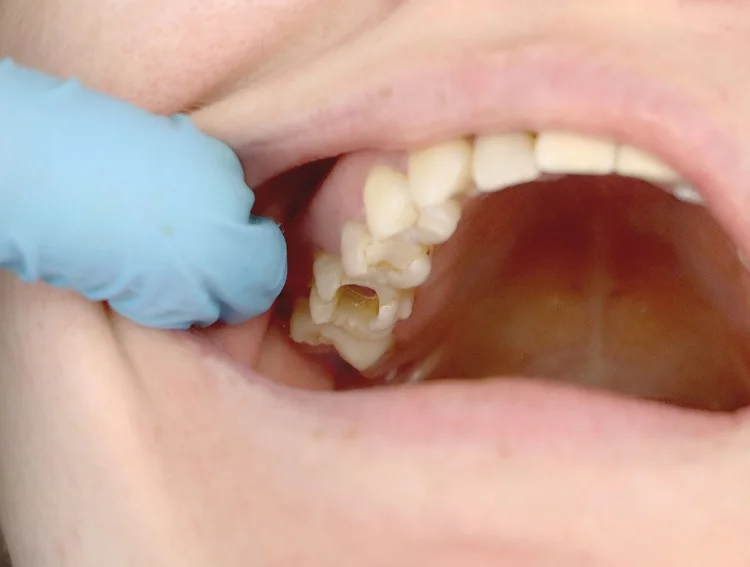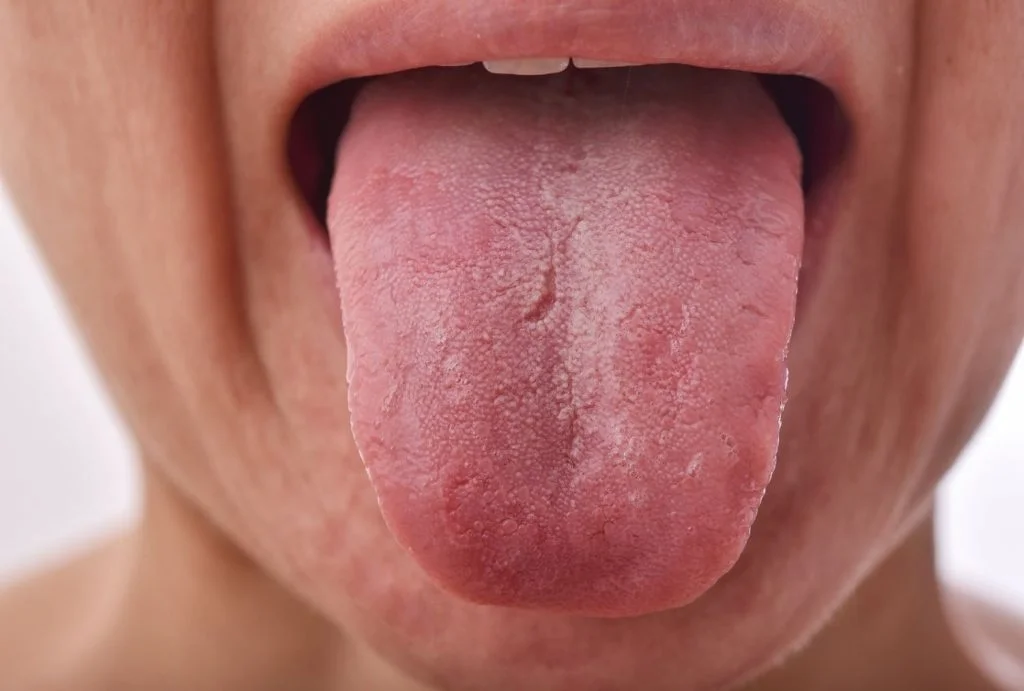Last Updated on: 19th September 2025, 12:30 pm
Interproximal reduction (IPR) is a safe dental procedure during which an orthodontist removes a small amount of enamel between teeth to create space for better alignment. It is painless, avoids unnecessary extractions, and improves orthodontic results when done by a trained professional.
In many orthodontic treatments, your orthodontist might tell you that interproximal reduction (IPR) is needed to improve your results.
Have you ever heard of the term? To explain it simply, imagine a carpenter trying to fit two wooden boards together, but they’re too tight. So, he gently sands one side so they fit perfectly, without weakening or damaging them.
In this article, you’ll learn what interproximal reduction is, how it’s done, and what care is required afterward. This way, you can go to your appointment feeling calm, knowing it’s a common procedure while understanding exactly how and why it’s done.
What is interproximal reduction?
Interproximal reduction (IPR), also called enamel slenderizing or stripping, is a common and safe procedure used during orthodontic treatment.
It involves removing a very small amount of enamel from the sides of certain teeth to slightly reduce their width and create extra space.
Why do orthodontists use IPR?
Your orthodontist may recommend interproximal reduction for several reasons:
- to create space for crowded teeth, allowing them to align properly without needing extractions.
- to close black triangles, which are small gaps near the gums caused by tooth shape or gum recession.
- to balance tooth size differences, improving bite and smile harmony.
- to help aligners or braces work better, allowing teeth to move into place more efficiently.
- to prevent future crowding, reducing the chance of teeth shifting back after treatment.
When is interproximal reduction needed?
IPR is usually recommended for mild to moderate crowding. The amount of enamel removed is minimal – between 0.1 and 0.5 millimeters – enough to create space but so small that you won’t notice it visually or feel any difference in your teeth.
However, for severe crowding, IPR may not be enough, and your orthodontist might recommend tooth extraction instead.
How do professionals perform interproximal reduction?
IPR is carefully planned to ensure safety and effectiveness. Your orthodontist will use digital scans, X-rays, or dental models to decide exactly how much enamel to remove and from which teeth.
What is the step-by-step process of IPR?
- Evaluation and planning: analyzing spacing, bite, and tooth size.
- Choosing the right tool: this may include:
- fine abrasive strips (similar to dental sandpaper, used gently between teeth).
- diamond-coated discs attached to a dental handpiece for precise enamel removal.
- mechanical oscillating tools designed for enamel polishing.
- Enamel reduction: removing 0.1 to 0.5 mm of enamel per side, always within safe limits that do not harm the tooth.
- Polishing and smoothing: leaving the teeth surfaces smooth so they don’t trap plaque or food.
- Checking the space created: confirming that the desired space is achieved before continuing treatment.
Most people describe interproximal reduction as painless, similar to the sensation of polishing or cleaning teeth at the dentist, with no need for anesthesia because enamel contains no nerves. You might feel slight vibrations or friction, but it is comfortable and quick.
How long does interproximal reduction take and what should you expect?
IPR is a quick and simple procedure:
- It is usually done in one appointment.
- It takes 15 to 30 minutes, depending on how many teeth are treated.
- there is no downtime, you can return to normal activities immediately.
Sometimes, your orthodontist may do IPR in phases throughout your treatment as teeth shift and space needs change.
What are the benefits of interproximal reduction?
Interproximal reduction (IPR) offers many advantages when performed by a trained orthodontist:
- it creates space without removing teeth, ideal for mild to moderate crowding.
- It improves alignment and bite balance, helping teeth settle into their proper positions.
- it uses close black triangles, making your smile look more aesthetic and harmonious.
- It enhances long-term stability, preventing teeth from shifting back after treatment.
- it helps aligners or braces work more efficiently, sometimes shortening it is
- minimally invasive, avoiding the need for extractions and, often completed in a single visit.
Is interproximal reduction safe for your teeth?
When performed by a trained orthodontist, interproximal reduction is very safe. According to the American Journal of Orthodontics:
- Only minimal enamel is removed, not enough to weaken teeth or cause long-term sensitivity.
- It does not increase cavity risk if you maintain good oral hygiene, as enamel remains thick enough to protect your teeth.
- It improves tooth alignment and bite function, supporting better oral health long-term.
What are the potential risks and side effects?
While rare when performed correctly, possible risks include:
- mild sensitivity: temporary sensitivity to hot or cold, which usually goes away within days.
- excessive enamel removal (if done improperly), which can expose dentin, leading to sensitivity or higher decay risk. This is extremely rare when done by professionals.
- minor gum irritation: slight discomfort may occur but resolves quickly.
Excessive removal could lead to sensitivity or weakening, which is why Interproximal reduction must always be carefully measured and performed only when indicated by a professional.
When is interproximal reduction not recommended?
IPR may not be suitable if you have:
- very thin or demineralized enamel, where further reduction could weaken teeth.
- severe dental sensitivity that makes the procedure uncomfortable.
- untreated cavities or gum disease, which must be treated first.
- severe crowding, where tooth extractions may be necessary instead.
Why should you never try DIY tooth filling?
Recently, videos online show people filing their teeth at home with nail files or sandpaper. This is extremely dangerous.
Professional interproximal reduction (IPR) | DIY tooth filling |
Done by trained professionals with specialized dental tools | Done with unsafe tools like nail files or sandpaper |
Removes minimal, precisely measured enamel safely | Removes enamel in an uncontrolled and uneven way |
Keeps teeth healthy and strong | Causes permanent damage, sensitivity, pain, or fractures |
Improves smile aesthetics and function | Leads to misshapen teeth and costly repairs like veneers or crowns |
Never attempt to file your teeth at home. Enamel does not grow back, and damage is often irreversible.
What care should you take after interproximal reduction?
Interproximal reduction is a simple procedure with no special recovery needed, but maintaining excellent oral hygiene is essential to keep your teeth healthy and strong.
How should you care for your teeth after IPR?
- Brush twice daily with a soft-bristle or electric toothbrush to clean all tooth surfaces gently.
- Use fluoride toothpaste (e.g. Sensodyne Pronamel, Colgate Total) to strengthen enamel and protect against decay.
- Floss daily to clean between teeth and prevent plaque buildup in the reduced areas. You can use a floss, a water flosser, or interdental brushes to do it better.
- Rinse with an alcohol-free mouthwash (e.g. Crest Pro-Health) to maintain gum health and freshness.
- Follow your orthodontist’s instructions on wearing aligners or retainers to keep your teeth in their correct positions.
What should you avoid after interproximal reduction?
Avoid hard, sticky, or sugary foods in the first days; they can cause discomfort or increase cavity risk if not cleaned properly.
What final tips should you keep in mind?
- Ask questions: Always understand why interproximal reduction is needed and how much enamel will be removed. Your orthodontist can show you before-and-after treatment plans.
- Maintain consistent oral hygiene: Using fluoride toothpaste and daily flossing protects the enamel and gums long-term. Get your orthodontic hygiene kit now!
- Never attempt DIY filing: Professional interproximal reduction is precise and safe, while DIY methods can cause permanent damage requiring expensive repairs.
- Trust your orthodontist: IPR is a well-studied technique used worldwide to create healthier, straighter, and more confident smiles.
Interproximal reduction (IPR) is a safe, simple, and painless procedure that creates space to align your teeth without needing extractions. When done by professionals, it keeps your smile straighter, healthier, and more balanced, with only minimal care needed afterwards to protect your enamel.
However, not all patients need IPR. Your orthodontist will evaluate your case and decide if it’s the right option for you. Trust their guidance, maintain good oral hygiene, and follow their instructions to achieve the confident, healthy smile you deserve.
Frequently Asked Questions
Can IPR damage my gums?
Is interproximal reduction reversible?
Can IPR be done on children?
How often is IPR needed during treatment?
Does everyone need IPR?
Voice and Search (Q&A)
Is interproximal reduction painful?
No, interproximal reduction is not painful. It involves removing only a tiny amount of enamel, and most patients feel no discomfort during the procedure.
How much enamel is removed during interproximal reduction?
Typically, between 0.1 and 0.5 millimeters of enamel is removed per tooth side, just enough to create space for proper alignment without weakening teeth.
Does interproximal reduction make teeth weaker?
No, when done professionally, IPR removes only minimal enamel and does not weaken teeth or increase cavity risk if you maintain good oral hygiene.
Share
References
1. Cleveland Clinic. (2024, November 8). Interproximal reduction. Cleveland Clinic. https://my.clevelandclinic.org/health/procedures/interproximal-reduction
2. Dahhas, F. Y., Almutairi, N. S., Almutairi, R. S., Alshamrani, H. A., Alshyai, H. S., Almazyad, R. K., Alsanouni, M. S., & Gadi, S. A. (2024). The role of Interproximal Reduction (IPR) in Clear Aligner therapy: A Critical analysis of indications, techniques, and outcomes. Cureus. https://doi.org/10.7759/cureus.56644
3. Goodman, J. (2016, June 3). Interproximal Reduction (IPR) for Dummies. Oral Health Group. https://www.oralhealthgroup.com/features/interproximal-reduction-ipr-for-dummies/
4. Pindoria, J., Fleming, P. S., & Sharma, P. K. (2016). Inter-proximal enamel reduction in contemporary orthodontics. BDJ, 221(12), 757–763. https://doi.org/10.1038/sj.bdj.2016.945
5. Yang, S., Seok, K. M., Bass, E. H. (2024). Guidelines for Interproximal Enamel Reduction (IPR). The New York State Dental Journal. Vol. 90, No. 6. https://commons.ada.org/cgi/viewcontent.cgi?article=1133&context=nysdj
-
Dr. Yeidy Carolina Mesa [Author]
DDS Yeidy Carolina Mesa Passionate Dentist | Advocate for Accessible Oral Health Education Graduating from Universidad CES in 2022, I am a dedicated general dentist with a lifelong passion for helping others and making a meaningful impact in the world. My journey into dentistry began at the age of 7, inspired by my own experience with braces and overcoming a fear of the dentist. This personal journey shaped my mission to help patients conquer their own dental anxieties and embrace a healthier,...
View all posts
-
Nayibe Cubillos M. [Medical Reviewer]
Pharmaceutical Chemestry |Pharmaceutical Process Management | Pharmaceutical Care | Pharmaceutical Services Audit | Pharmaceutical Services Process Consulting | Content Project Manager | SEO Knowledge | Content Writer | Leadership | Scrum Master
View all posts
A healthcare writer with a solid background in pharmaceutical chemistry and a thorough understanding of Colombian regulatory processes and comprehensive sector management, she has significant experience coordinating and leading multidisciplina...


